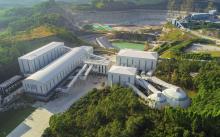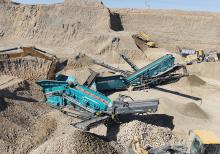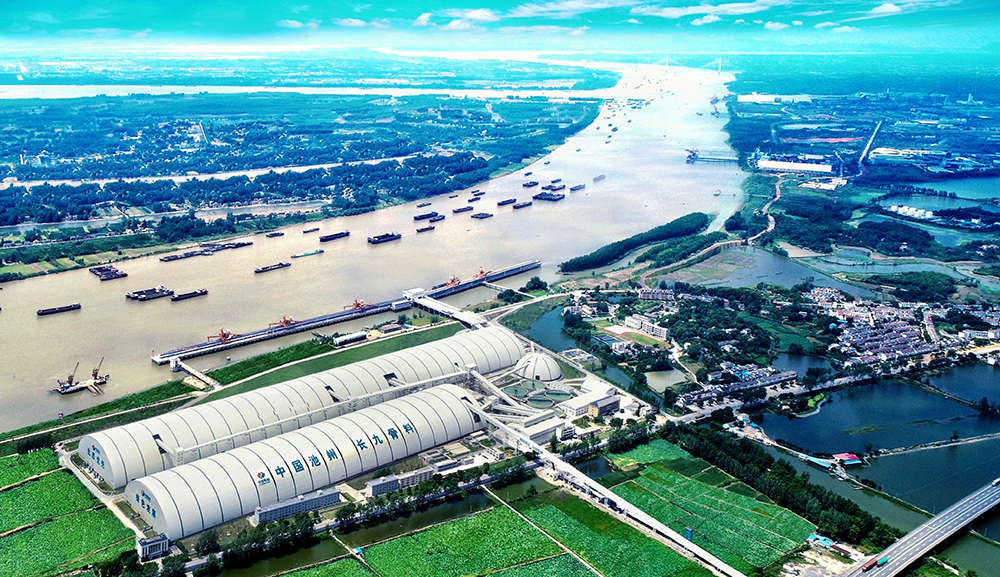
In recent years, China’s annual production/consumption of aggregates has remained at about 20 billion tonnes, with an annual output value of more than 200 billion yuan (€27.84bn), and transportation costs of more than 500 billion yuan (€69.58bn), accounting for about 1/40 of Chinese GDP.
This year, affected by the COVID-19 epidemic, the demand for aggregates has declined to some extent compared with previous years.
CAA, the Chinese national aggregates association, says that the main factors driving demand for aggregates in the country are real estate projects, large infrastructure projects such as roads, bridges, water conservancy and hydropower, the progress of the new urbanisation and rural revitalisation plan, and construction of functional areas for coordinated regional development.
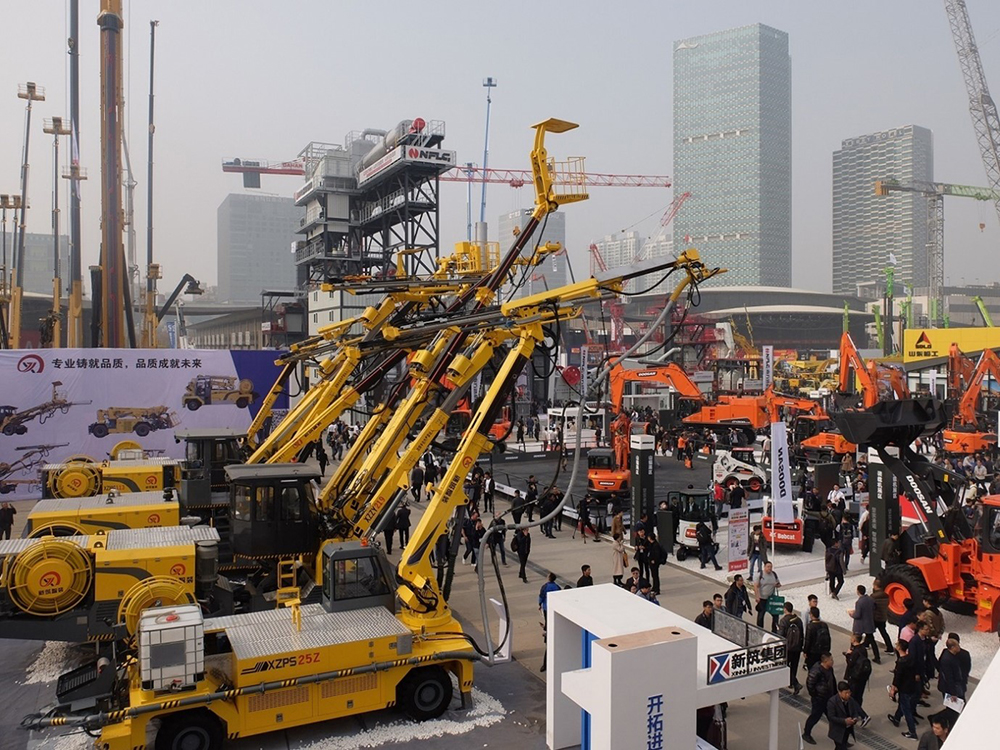
In the first half of 2022, national aggregates production totalled 8.18 billion tonnes according to data from the CAA, a 14.4% decrease from the same period in 2021. In the first half of 2022, under the support of the government’s policy of “steady growth in infrastructure”, high investment in infrastructure provided strong support for aggregates demand, but the growth rate of real estate investment continued to decline, which had an impact on demand for aggregates.
At the same time, affected by factors such as COVID-19 epidemic prevention and control and the high inventory of aggregates-producing enterprises, the CAA says production in the first half of the year declined to a certain extent year-on-year.
CAA chairman Hu Youyi says that, currently, Chinese quarry operators particularly are looking for quarrying equipment that is suitable for large-scale, automated, intelligent and environmentally friendly production.
“This is because China’s urbanisation progress is currently in a period of rapid development, and the demand for aggregates is large,” Hu states.
He adds that a large number of small quarries have been shut down, and the number of quarries in China has reduced from more than 50,000 in 2013 to little more than 10,000 in 2022. This reduction is due to regional governments promoting the integration and reorganisation of quarries, and the building of large-scale quarries.
Hu says: “In addition, China is vigorously developing the construction of [an] ecological civilisation, and environmental protection requirements are tightening. It is required that the quarrying equipment must meet the environmental protection requirements.”
Due to the impact of the COVID-19 epidemic in Shanghai in mid-March of 2022, the CAA says the amount of aggregates consumed in the city in the first half of the year has decreased.
Shanghai is an area that consumes aggregates, but does not produce them. The aggregates are supplied by waterways and land routes along the Yangtze River Basin.
However, Hu says the lockdown’s impact on China’s wider aggregates industry is limited.
“As Shanghai lifted the lockdown in early June after the epidemic was under control, infrastructure construction projects in all aspects were launched in an orderly manner, enterprises resumed work and production, and the supply of aggregates returned to normal,” he adds.
In terms of major developments in the quarrying and aggregates sector over the next year to 18-months, Hu comments: “In China’s 14th Five-Year Plan, the government has proposed plans of new urbanisation construction, dual circulation (a new pattern of development that is focused on the domestic economy and features positive interplay between domestic and international economic flows), and infrastructure such as highway, railway and bridges.
“Therefore, China’s demand for aggregates will continue to increase in the future. Meanwhile, the CAA is working hard in the setting and revision of the standards for China’s aggregates industry, and quarry operators and equipment companies will continue to develop towards a large-scale, intensive, intelligent and environmentally-friendly direction.”
Hu adds that some new types of quarry equipment have been launched in China this year, such as new hammer crushers and large-scale gyratory crushers. A range of testing equipment has also been introduced including rock-abrasion index-testing machines and rock-crushing work index-testing machines.
The most commonly used aggregates products in China are currently machine-made sand and crushed stone. The machine-made sand is mainly medium-coarse sand, and the fineness modulus exceeds 2.3; the particle size of crushed stone is mainly between 5mm and 25mm.
In terms of the exporting of Chinese aggregates, Hu says that currently aggregates output in Taiwan, Hong Kong and Macau is insufficient, and they basically rely on the mainland’s aggregates to meet their levels of demand.
“About 100 million tonnes of aggregates (machine-made sand and crushed stone) are exported to Hong Kong, Macau and Taiwan every year,” he adds.
A number of recent Chinese government actions are currently impacting the quarrying and aggregates sector. In November 2019, 10 departments including the Ministry of Industry and Information Technology jointly issued the ‘Several Opinions on Promoting the High-quality Development of the Machine-made Aggregates Industry’, and in March 2020, 15 departments including the National Development and Reform Commission jointly issued the ‘Guiding Opinions on the Healthy and Orderly Development of the Aggregates Industry’, which the CAA says stabilised the supply of the aggregates market and maintained the overall stability of the aggregates price.
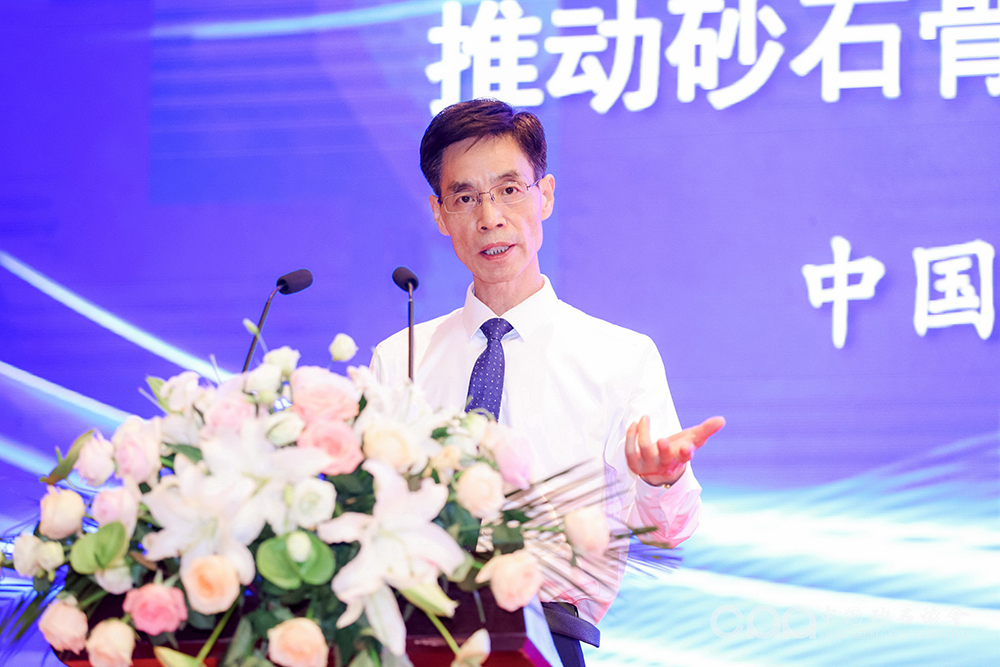
At the same time, the Chinese government is vigorously developing green mine and green factory construction, and has introduced strict environmental protection policies, which Hu says are all designed to promote the transformation, upgrading and high-quality development of the Chinese aggregates industry.
He adds that, to save primary quarry resources, reduce environmental pollution and waste of resources, China’s aggregates industry actively recycles waste including tailings, waste rock, stone powder, construction solid waste and cave slag. According to the CAA, there are more than ten enterprises in China engaged in the transformation of rundown urban areas, abandoned mines restoration, and comprehensive utilisation of tailings and waste rocks, with lots of successful cases.
“China vigorously promotes the comprehensive utilisation of C&D [construction & demolition] waste, tailings and waste rocks. Dozens of cities have carried out the construction of ‘waste-free cities’,” adds Hu. “The utilisation rate of construction solid waste in these cities has reached 55%. The relevant experience gathered from this will be used nationwide in the next few years.”
He says that dozens of enterprises across the country have been involved in the successful transformation of shanty towns, abandoned mines, and the comprehensive utilisation of tailings and waste rocks. He adds that there are many companies in China that are able to provide the market with overall solutions for recycled building materials, such as recycled concrete, recycled blocks, permeable bricks and other recycled products. “These have been applied in many fields, forming a new model of material recycling,” Hu says.
The bauma China 2022 construction machinery exhibition planned to be held in Shanghai in November 2022 was a casualty of the country’s COVID situation. Organiser Messe Muenchen said the decision to cancel the event, which was taken at the end of September, was due to the Chinese Government’s current COVID-19 policy and its own concern for the health and safety of the exhibitors and visitors.
The bauma China 2022 show was to be held from 25th to 27th November 2022 at the Shanghai New International Exhibition Center.
“A successful bauma China with certainty for planning is our primary concern,” explained Xu Jia, CEO of Messe Muenchen Shanghai. “Due to the still unforeseeable circumstances, this objective is unfortunately no longer feasible. To avoid [a] last-minute decision which may bring financial loss to the customers, we, therefore, cancel the show for 2022 with a heavy heart at this stage and hope that all exhibitors can now start their preparation and planning for a successful bauma China in 2024.”
bauma China will be back again in 2024, from 26 to 29 November 2024. It will be held once more at the Shanghai New International Exhibition Center.
China has published a roadmap for the country’s building materials industry, one of the biggest domestic emitters of greenhouse gases, to start reducing carbon emissions by 2030.
News site Caixin Global reported that the plan sets out requirements for the industry to adopt new materials and upgrade technologies to reduce energy consumption and carbon emissions in key sectors including cement, glass and ceramics during the 14th Five-Year Plan period between 2021 and 2025. The plan also encourages mergers and consolidation in the industry to better allocate resources and improve industry structure.
The World Cement Association says that cement production in China was down sharply in the first six months of the year, with a 15% fall to 977 million tonnes. WCA CEO Ian Riley told the Financial Times that a combination of the country’s real estate crisis and China’s zero-COVID policy has started to impact the country’s construction sector.
Despite this, a report from research company GlobalData predicts future growth in the Chinese construction market is likely to maintain demand for the country’s aggregates producers.
The construction market in the country was valued at US$4.5 trillion in 2021, according to GlobalData. It predicts the market will grow at an average annual growth rate (AAGR) of more than 4% during the period 2023-2026.
GlobalData says the key sectors in China’s construction market include commercial construction, industrial construction, infrastructure construction, energy and utilities construction, institutional construction and residential construction.
In the short term, the report states that the commercial construction sector is likely to be weakened by the imposing of strict lockdowns in several provinces. The sector’s output over the 2023-2026 period will be supported by a gradual recovery in domestic tourism and retail activity, coupled with investments as part of the 14th Five-Year Plan (FYP) (2021–25).
The industrial construction sector is expected to grow in full-year 2022, supported by an improvement in industrial, manufacturing and export activity, coupled with investments in automobile manufacturing to meet rising demand for new energy vehicles such as electric.
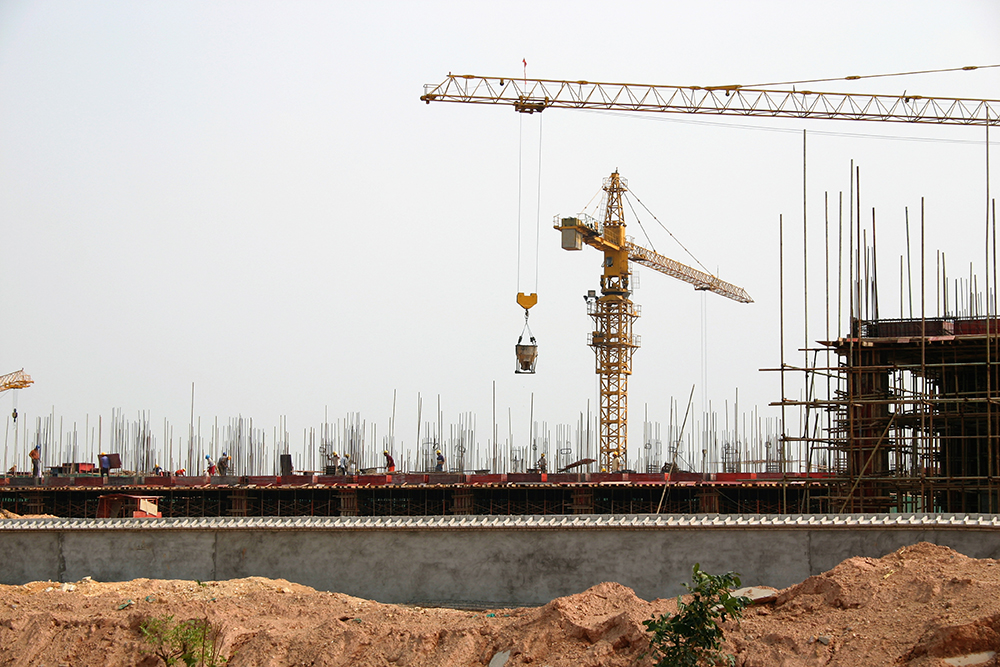
The infrastructure construction sector’s output is expected to grow in 2022, supported by investments in rail, highway, waterway, and civil aviation projects as part of the 14th FYP. The sector’s output will also be supported by the government’s plans to accelerate infrastructure spending to stimulate economic growth.
The energy and utilities sector’s growth over the forecast period will be supported by investments on renewable energy, liquefied natural gas (LNG) and telecommunication infrastructure projects.
The GlobalData report predicts that growth in the institutional sector between 2023 and 2026 will be driven by public - and private-sector investment on healthcare, scientific research, and educational buildings as part of the 14th FYP. The government expects the healthcare sector to grow by 2030, attracting further investment towards the sector.
In 2022, the sector’s output will be affected by the tightening of regulations on property lending and weak buyer confidence in the housing market. Over the forecast period, however, GlobalData says that output will be supported by rising household incomes, coupled with the government’s efforts to renovate ageing, urban residential areas across the country and increase the supply of affordable housing units in high-demand urban areas.
The Chinese government has been boosting infrastructure investment measures and says the country’s economy is still on track to a steady recovery with a gradual normalisation of activities and strong policy support. Profits at China's major industrial companies declined at a slower pace in August, government officials stated in late September.
Zhu Hong, a senior statistician at the National Bureau of Statistics, said that industrial profits improved in August, registering a narrowed year-on-year contraction compared with the previous month.
Zhou Maohua, an analyst at China Everbright Bank, highlighted the improvement in profits earned by midstream and downstream manufacturing enterprises amid the government's measures to ensure stable prices and supplies, ease enterprises' burdens, and increase financial support, saying that will help to stimulate market vitality, boost employment and expand consumption demand.
Charlie Zheng, chief economist at Samoyed Cloud Technology Group, estimated that China's GDP will grow by around 4% in the third quarter, as the government has rolled out a series of policies to bolster this expansion.

